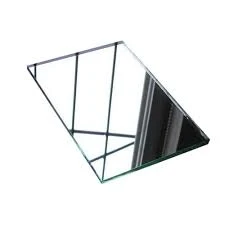

Understanding Tinted Glass Types A Comprehensive Overview
Tinted glass is a well-known architectural feature, commonly used in windows, doors, and facades of buildings, as well as in vehicles. Its primary function is to reduce light transmission, provide privacy, and help in the regulation of indoor temperatures. However, tinted glass is not just a singular product; it comes in various types, each designed for specific applications and offering unique advantages. This article will explore the different types of tinted glass, their uses, benefits, and considerations.
Types of Tinted Glass
1. Solar Control Tinted Glass Solar control tinted glass is designed to minimize solar heat gain while allowing natural light to enter a space. It contains metal oxides or dyes that dramatically reduce the amount of solar radiation that passes through. This type of glass is advantageous in regions with high sun exposure, as it can significantly lower cooling costs during hot months and enhance indoor comfort without sacrificing too much natural light.
2. Reflective Glass Reflective tinted glass has a metallic coating that reflects solar radiation away from the building. This coating not only offers excellent heat control but also adds a sleek appearance to buildings by providing a mirror-like finish. Reflective glass is commonly used in commercial properties and high-rise buildings, providing structure aesthetics and increasing energy efficiency.
3. Laminated Tinted Glass Laminated tinted glass consists of two or more layers of glass, with a layer of plastic interlayer. The advantage of this type is that it provides enhanced safety and security, as it holds together when broken. Additionally, laminated tinted glass offers UV protection, which helps to reduce fading of interior furnishings. It’s suitable for both residential and commercial properties, especially in areas prone to hurricanes or extreme weather.
4. Ceramic Frit Glass Ceramic frit glass is produced by applying a ceramic paint to the surface of the glass, which can be tinted to various colors. This type is often used in facades and interior applications where high durability and aesthetic appeal are required. The frit pattern can also provide additional solar control and privacy while offering an artistic touch to the building design.
5. Clear Tinted Glass Clear tinted glass undergoes a tinting process during manufacturing, resulting in a subtle change in color. While it allows a significant amount of light transmission, it also provides some level of glare reduction and UV protection. This type is ideal for homes and offices where natural light is desired but where glare control is also necessary.
Benefits of Tinted Glass
The benefits of using tinted glass are plentiful

- Energy Efficiency Tinted glass can noticeably reduce reliance on air conditioning systems, leading to lower energy bills and a reduced carbon footprint. - UV Protection By blocking harmful UV rays, tinted glass helps protect occupants and interior furnishings from sun damage, prolonging their lifespan.
- Increased Privacy Tinted glass provides a level of privacy without completely obstructing the view, making it an excellent choice for residential properties.
- Aesthetic Appeal Available in various colors and finishes, tinted glass can enhance a building's appearance, contributing to modern architectural styles.
Considerations When Choosing Tinted Glass
When selecting tinted glass, several factors should be taken into account
- Local Climate The choice of tinting depends significantly on the climate of the area. Warmer climates might benefit from darker tints to reduce heat gain, whereas cooler climates might see advantage from lighter tints.
- Building Regulation Local building codes may dictate certain requirements for windows, including the amount of solar gain allowed.
- Application Consider where the glass will be used—commercial vs. residential, interior vs. exterior—as this will influence the type of tint needed.
In conclusion, tinted glass serves a myriad of purposes, from energy efficiency to aesthetic appeal. Understanding the different types and their specific benefits allows consumers, architects, and builders to make informed decisions, ensuring the right glass is chosen for the right application. As technology advances, the options for tinted glass continue to grow, providing even more innovative solutions for modern architecture.